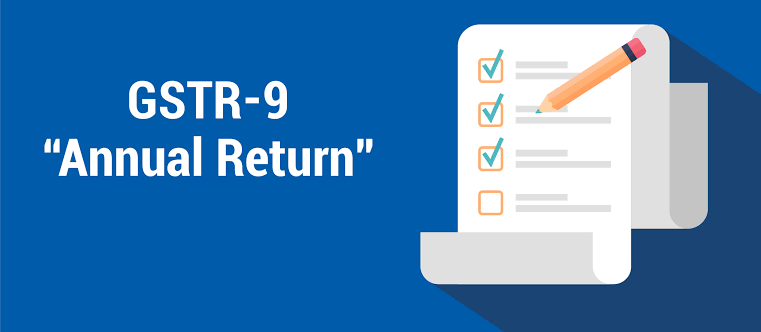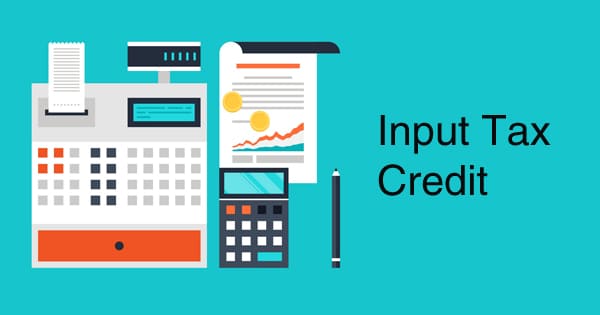As per section 44(1) of the CGST Act, 2017 read with Rule 80(1) of the CGST Rules, 2017 every registered person other an Input Service Distributor, tax deductor / collector , a casual taxable person and a non-resident taxable person is required to file the Annual Return for every financial year in Form GSTR-9, on or before 31st December following the end of such financial year.
In view of above all the registered persons barring few irrespective of their aggregate turnover were required to furnish the annual return for the FY 2019-20 till 31st December, 2020.
However, there are two changes in above which are discussed below:
i) Annual Return for FY 2019-20 is not required to be filed by taxpayers having aggregate turnover upto Rs 2 crore:
Although as per Section 44(1) all taxpayers are required to file annual return irrespective of their turnover, however vide Notification No. 47/2019 – Central Tax dated 09.10.2019 as amended by Notification No. 77/2020 – Central Tax dated 15.10.2020 an option has been provided to the registered persons whose aggregate turnover does not exceed Rs.2 crores in a financial year viz FY 2019-20, for furnishing the annual return. In other words the tax payers having aggregate turnover upto Rs 2 crore are not required to file annual return.
For meaning of aggregate turnover Click Here
ii) Due date of filing of annual return for FY 2019-20 extended to 28.2.2021
CBIC has vide Notification No. 95/2020- Central Tax dated 30.12.2020 extended the due date for filing of Annual Return in Form GSTR-9 and Annual Reconciliation Statement in Form GSTR- 9C for the financial year 2019-2020 from 31.12.2020 to 28.02.2021.
Who is required to file GSTR-9 for FY 2019-20
Every registered person other an Input Service Distributor, tax deductor / collector (Section 51/ 52) , a casual taxable person and a non-resident taxable person whose aggregate turnover in a financial year viz FY 2019-20 exceeds Rs 2 crore. It may be noted that a composition dealer is required to furnish annual return in GSTR-9A as per proviso to Rule 80(1) of the CGST Rules, 2017.
It is important to note that in case the aggregate turnover of a taxpayer was above Rs 2 crore in FY 2018-19 and accordingly he had filed the annual return, if aggregate turnover of such person for FY 2019-20 falls below Rs 2 crore, he is not required to furnish the annual return for FY 2019-20 as the relevant limit of Rs 2 crore is to checked for the relevant financial year for which GSTR-9 is to be filed.
Relaxations in providing details in GSTR-9 for FY 2019-20 vis-à-vis 2017-18/ 2018-19
Several relaxation were provided to taxpayers in furnishing of information in GSTR-9 for 2017-18 and 2018-19. Now the moot question is whether such relaxations have been carried forward to FY 2019-20 also or not. In this regard we can say that the relaxations have partially been carried forward in GSTR-9 of FY 2019-20.
For ready reference of our readers the table wise comparative position of relaxations applicable in FY 2017-18 and 2018-19 vis-à-vis 2019-20 is tabulated below:
| Table | Particulars | F.Y. 2017-18 and 18-19 | F.Y. 2019-20 |
| 4I | Credit Notes issued in respect of transactions on which tax is payable as specified in (B) to (E) to table 4 | The registered person had option to fill outward supply details in table 4B to table 4E net of credit notes in case there is any difficulty in reporting such details separately in Table 4I. | This relaxation has been carried forward to FY 2019-20 as well vide Notification No. 79/2020-CT dated 15.10.2020. Accordingly supplies can be disclosed net of credit notes in table 4B to 4E, instead of showing the credit notes amount separately in table 4I. |
| 4J | Debit Notes issued in respect of transactions on which tax is payable as specified in (B) to (E) to table 4 | The registered person had option to fill outward supply details in table 4B to table 4E including debit notes in case there is any difficulty in reporting such details separately in Table 4J. | This relaxation has been carried forward to FY 2019-20 as well vide Notification No. 79/2020-CT dated 15.10.2020. Accordingly supplies can be disclosed including debit notes in table 4B to 4E, instead of showing the debit notes amount separately in table 4J. |
| 4K & 4L | Outward taxable supply amendments | The registered person had option to fill outward supply details in table 4B to table 4E net of amendments in case there is any difficulty in reporting such details separately in Table 4K and 4L. | This relaxation has been carried forward to FY 2019-20 as well vide Notification No. 79/2020-CT dated 15.10.2020. Accordingly supplies can be disclosed net of amendments in table 4B to 4E, instead of showing the total of amendments amount separately in table 4k / 4L. |
| 5D, 5E & 5F | Exempted, Nil rated and Non-GST supply | The registered person had option to either separately report his supplies as exempted , Nil rated and Non-GST supply or report consolidated information of all these three heads in the ‘exempted’ row only. | This relaxation has been carried forward to FY 2019-20 as well vide Notification No. 79/2020-CT dated 15.10.2020. Accordingly consolidated information for exempted , Nil rated and Non-GST supply can be given under “exempted row” only viz Table 5D. |
| 5H | Credit Notes in respect of outward supplies on which tax is not payable. | The registered person had option to fill outward supply details in table 5A to table 5F net of credit notes in case there is any difficulty in reporting such details separately in Table 5H. | This relaxation has been carried forward to FY 2019-20 as well vide Notification No. 79/2020-CT dated 15.10.2020. Accordingly supplies can be disclosed net of credit notes in table 5A to 5F, instead of showing the credit notes amount separately in table 5H. |
| 5I | Debit Notes in respect of outward supplies on which tax is not payable. | The registered person had option to fill outward supply details in table 5A to table 5F including debit notes in case there is any difficulty in reporting such details separately in Table 5H. | This relaxation has been carried forward to FY 2019-20 as well vide Notification No. 79/2020-CT dated 15.10.2020. Accordingly supplies can be disclosed including debit notes in table 5A to 5F, instead of showing the credit notes amount separately in table 5H. |
| 5J & 5K | Outward supply (on which tax is not payable) amendments | The registered person had option to fill outward supply details in table 5A to table 5F net of amendments in case there is any difficulty in reporting such details separately in Table 5J and 5K. | This relaxation has been carried forward to FY 2019-20 as well vide Notification No. 79/2020-CT dated 15.10.2020. Accordingly supplies can be disclosed net of amendments in table 5A to table 5F, instead of showing the total of amendments amount separately in table 5J / 5K. |
| 6B | Input tax Credit of inward supplies (other than imports and inward supplies liable to reverse charge includes services received from SEZ). | The registered person had option to either report the break of ITC as inputs, capital goods and input services or report the entire ITC under the ‘inputs’ row only. | This relaxation has slightly been modified for 2019-20 vide Notification No. 79/2020-CT dated 15.10.2020. Now ITC of Capital goods needs to be reported separately. However the entire ITC of inputs and input services can be reported under ‘inputs’ row. |
| 6C | Input tax Credit of inward supplies received from unregistered persons liable to reverse charge on which tax is paid under RCM. | The registered person had option to either report the break of ITC as inputs, capital goods and input services or report the entire ITC under the ‘inputs’ row only. | This relaxation has slightly been modified for 2019-20 vide Notification No. 79/2020-CT dated 15.10.2020. Now ITC of Capital goods needs to be reported separately. However the entire ITC of inputs and input services can be reported under ‘inputs’ row. |
| 6D | Input tax Credit of inward supplies received from registered persons liable to reverse charge on which tax is paid under RCM. | The registered person had option to either report the break of ITC as inputs, capital goods and input services or report the entire ITC under the ‘inputs’ row only. | This relaxation has slightly been modified for 2019-20 vide Notification No. 79/2020-CT dated 15.10.2020. Now ITC of Capital goods needs to be reported separately. However the entire ITC of inputs and input services can be reported under ‘inputs’ row. |
| 6E | Input tax Credit of import of goods (including supplies from SEZ). | The registered person had option to either report the break of ITC as inputs and capital goods or report the entire ITC under the ‘inputs’ row only. | Interestingly vide Notification No. 79/2020-CT dated 15.10.2020. it has been mandated that now ITC of Capital goods needs to be reported separately. However the entire ITC of inputs and input services can be reported under ‘inputs’ row. However as this table is for import of goods and thus input services is not relevant here. Accordingly we can say that relaxation in regard to table 6E is no longer applicable. |
| 7 | Details of ITC Reversed and Ineligible ITC for the financial year | The registered person had option to either fill his information on reversals separately in table 7A to 7E or report the entire amount of reversal under table 7H (other reversals) only. However , reversals on account of TRAN-1 credit (table 7F) and TRAN-2 ( table 7G) are to be mandatorily reported. | This relaxation has been carried forward to FY 2019-20 as well vide Notification No. 79/2020-CT dated 15.10.2020. Accordingly instead of depicting reversals separately in table 7A to 7E the taxpayers can report the entire amount of reversal under table 7H. |
| 8B, 8C & 8D | Other ITC related information (GSTR-2A reconciliation). | Option was available to upload the details for the entries in Table 8A to 8D duly signed, in PDF format in FORM GSTR-9C (without the CA certification) | No such option is available to the taxpayer. |
| 12 & 13 | Reversal of ITC availed during previous financial year & ITC availed for the previous financial year | The registered person has option to not to fill these tables | This relaxation has been carried forward to FY 2019-20 as well vide Notification No. 79/2020-CT dated 15.10.2020 thus a taxpayer is not required to furnish details in Table 12 and 13. |
| 15 A to 15G | Particulars of Demands and Refunds | The registered person has option to not to fill the tables 15A to 15G in regard to demand and refunds. | This relaxation has been carried forward to FY 2019-20 as well vide Notification No. 79/2020-CT dated 15.10.2020 and thus details of demands and refunds are not required to be provided by a taxpayer in tables 15A to 15G. |
| 16A, 16B & 16C | Information on supplies received from composition taxpayers, deemed supply under section 143 and goods sent on approval basis | The registered person has option to not to fill the tables 16A, 16B and 16C. | This relaxation has been carried forward to FY 2019-20 as well vide Notification No. 79/2020-CT dated 15.10.2020 and thus details on supplies received from composition taxpayers, deemed supply under section 143 and goods sent on approval basis need not be provided in tables 16A, 16B and 16C. |
| 17 & 18 | HSN Wise Summary of outward supplies and Inward supplies | The registered person has option to not to fill the tables 17 & 18. | This relaxation has been carried forward to FY 2019-20 as well vide Notification No. 79/2020-CT dated 15.10.2020 and thus HSN Wise Summary of outward supplies and Inward supplies may not be provided by the taxpayer under Table 17 & 18. |
Treatment of earlier year transactions in GSTR-9
It is important to note that vide Notification No. 79/2020-CT dated 15.10.2020 a new para 2A has been inserted in the Instructions part of GSTR-9 which reads as under:
“2A. In the Table, against serial numbers 4, 5, 6 and 7, the taxpayers shall report the values pertaining to the financial year only. The value pertaining to the preceding financial year shall not be reported here.”
Accordingly figures of outward supplies or ITC of earlier years reported in GSTR-3B of the year for which GSTR-9 is being filed, needs to to be isolated from the GSTR-9.
For details in regard to treatment of inter year adjustments in GSTR-9 Click here.
Hope you liked the article. Kindly provide your comments to info@clearmytax.in.
***
Subscribe our portal and get FREE Tax e-books , quality articles and updates on your e-mail.
Resolve your GST queries from national level experts on GST free of cost.
CA. Mohammad Salim is an ICAI award winning Chartered Accountant having rich experience of more than 20 years in the field of indirect taxes. He is the Member, Indirect Taxes Committee of PHD Chamber of Commerce and Industry. He is author of four successful books on GST published by Taxmann Publication and is also GST expert on taxmann portal.




